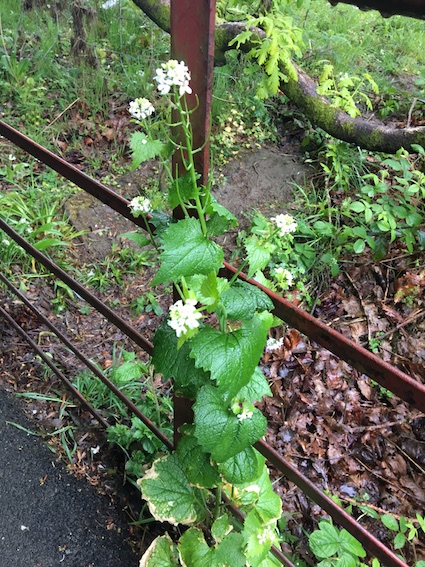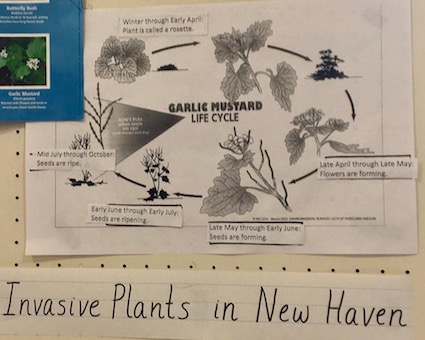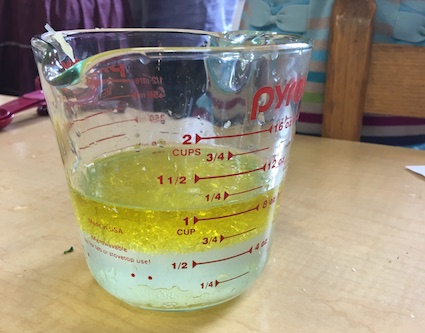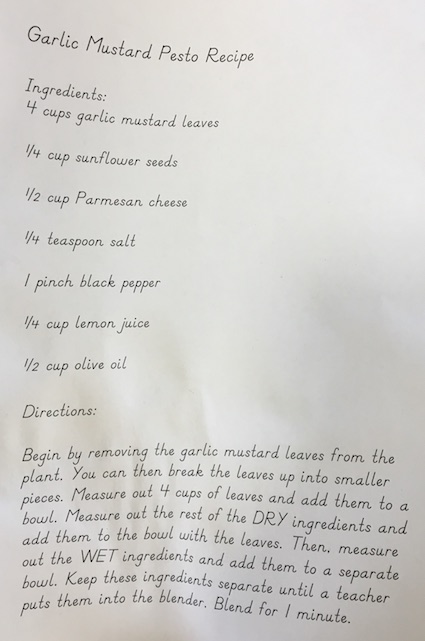This blog post is about Garlic Mustard (Alliaria petiolata) sometimes called Jack-by-the-hedge. You can also forage for Wild Garlic ((Allium ursinum)) which is also found in many woodlands in spring time. More information and Wild Garlic recipes can be found on the BBC Good Food website.

In spring, the hedgerows and many other habitats are filled with garlic mustard flowering. Although it smells strongly of garlic, it is a member of the cabbage family. Its botanical name is Alliaria petiolata.

The leaves can be picked, washed and used in salads or added to sauces – they get increasingly bitter as they mature so use young fresh leaves for this purpose that have been collected away from roadsides and in according with local or national advice. All parts of the plant are edible – the roots have an exceptionally strong taste, a bit like horseradish. Once the plant flowers, its leaves may be too bitter to use.

When visiting Cold Spring School in New Haven, it was lovely to see the Grade 2 and 3 children create garlic pesto from this wildflower. In North America, the species has become invasive. The children were studying invasive plants as part of a local studies project. Their teacher had also used the opportunity to introduce volume and capacity in a practical way beforehand so that the children were able to read and follow the recipe independently.

This is how they made the pesto:

Another lovely opportunity to use a foraged and gathered plant for a positive educational purpose. Eat with pasta! You may find this download about where to forage with children helpful too.
This blog post was originally published in 2017.



















